
Trees Around Las Vegas, Vegetation Around Las Vegas
 |
General: Date Palms (Phoenix dactylifera) are palm trees introduced into this country from north Africa for date cultivation. Date palms have long, feather-like fronds (leaves), whereas the native California Fan Palms have fan-shaped fronds. Although "feather-like" in appearance, the fronds are stiff and spiny. Date Palms are usually found in agricultural groves or as ornamental plants in urban settings. They can be found growing in groves at Furnace Creek in Death Valley National Park, although the Park Service seems to be removing them. Family: Palm (Arecaceae). Other Names: |
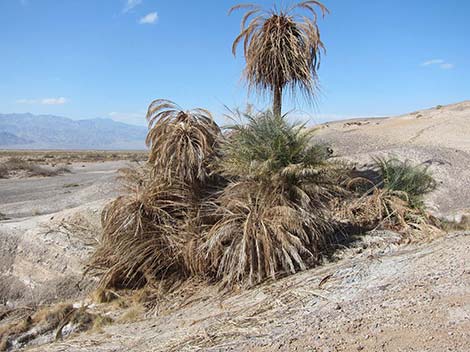 |
Plant Form: Upright, unbranched, evergreen tree with a tuft of leaves at the tip. Height: To about 25 feet. Trunk: Tall and usually straight. Old fronds remain attached, but drop off with time. Bark: None per se. Stems: No branches. Leaves: feather-like (pinnately compound); remain attached to the trunk; leaflets long and narrow, like long spines off the midrib, folded lengthwise with margins upward. |
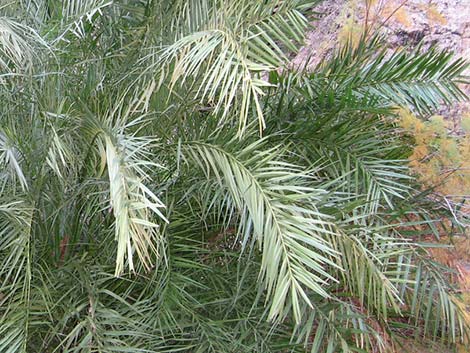 |
Flowers: Inflorescence: large panicle (modified frond). Flowers inconspicuous, yellow. Seeds: Fruit 1 to 2-inches long, oblong, brown, sweet fruit (i.e., commercial dates). Habitat: Arid deserts, usually agricultural fields. Elevation: To about 1,000 feet. Distribution: Native to north Africa; widely introduced in agricultural and urban settings. Comments: The leaves are long and feather-like, not fan shaped (compare with native California Fan Palms). |
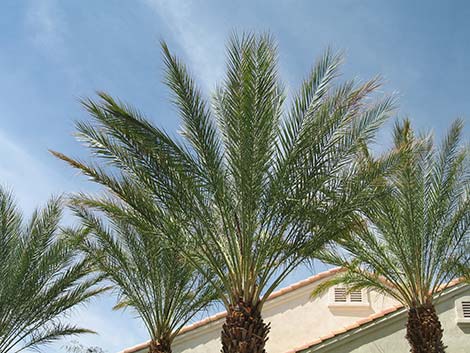 Fronds are long and narrow |
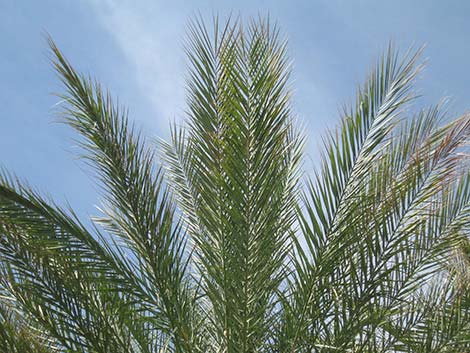 Fronds have a central axis and leaflets off the central axis |
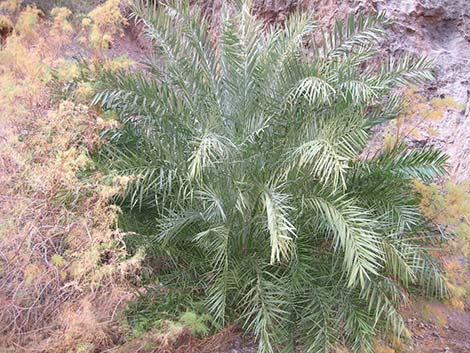 Funny top-down view of a date palm in a desert canyon |
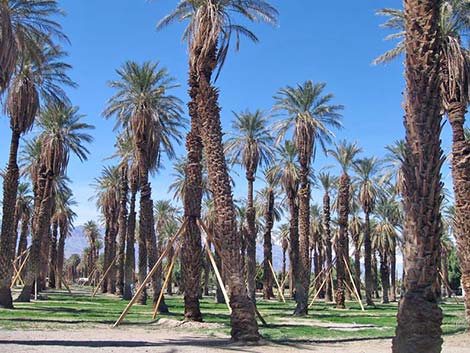 Date palms in the historic Furnace Creek (Death Valley NP) grove |
Note: All distances, elevations, and other facts are approximate. Names generally follow the USDA database.
![]() ; Last updated 220109
; Last updated 220109
| All Deciduous Trees | Plant Species Index | Glossary | Copyright, Conditions, Disclaimer | Home |